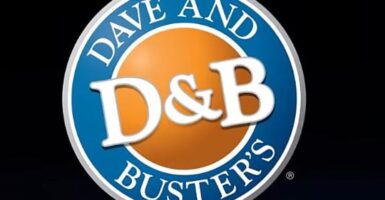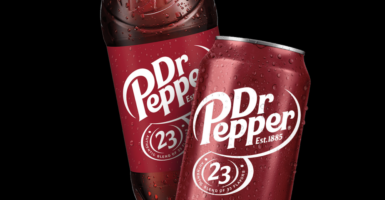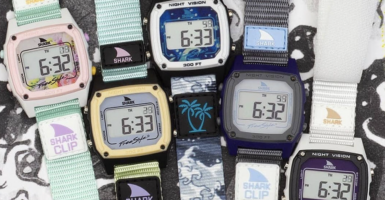We Still Miss These Restaurant Chains That Are Long Gone
Have you ever had a particular craving you couldn’t satisfy because the restaurant has long been out of business? Maybe you’re dying for the herb-roasted prime rib from Steak and Ale? Or maybe some classic fried chicken from Minnie Pearl’s? Or maybe you’ve got a sweet tooth that can only be satisfied with one of HoJo’s 28 flavors of ice cream?
Restaurant chains are a huge part of American culture, but not every restaurant chain is successful. While some withstand the test of time, others reach great heights only to fail miserably. These defunct restaurant chains once thrived but are now history. How many of these restaurants do you remember? Read through and see if any trigger your memories!
Minnie Pearl’s Chicken
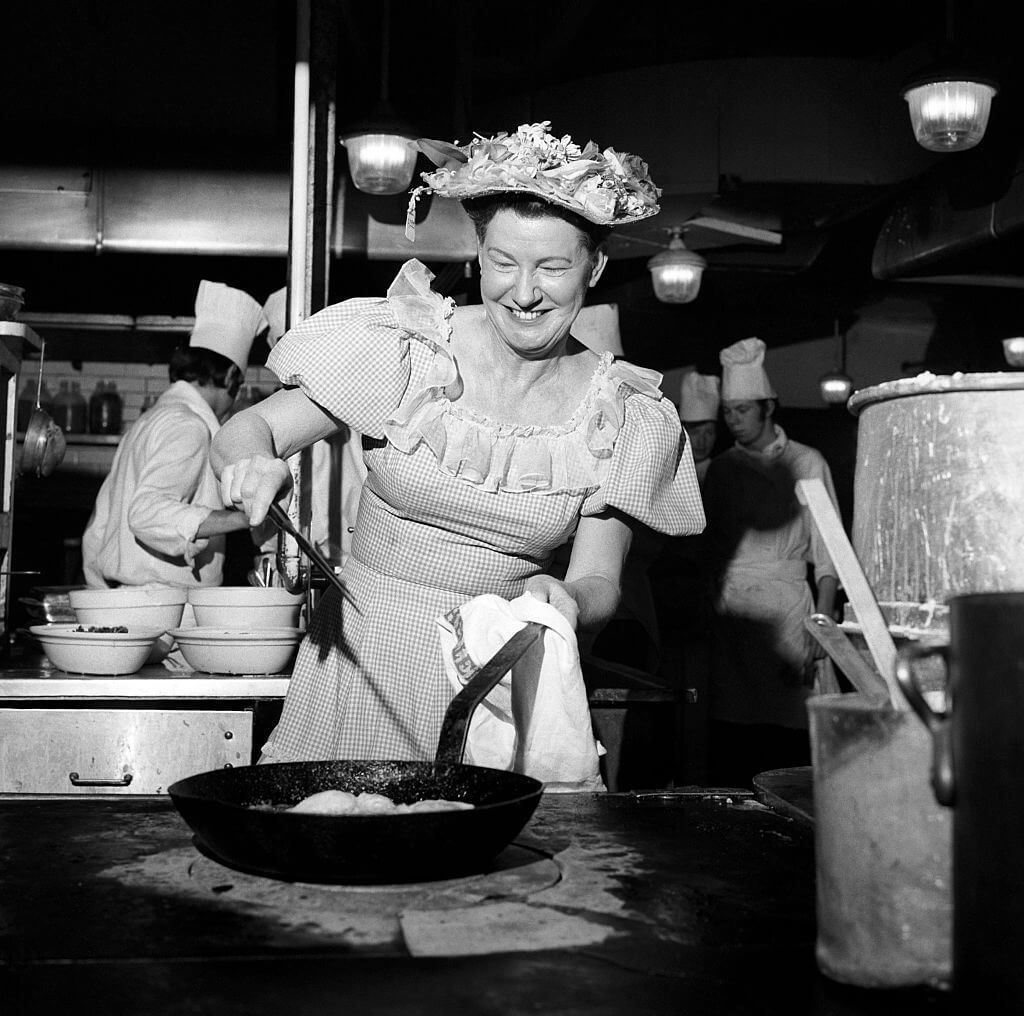
In the late 1960s, businessman John Jay Hooker and gospel singer Mahalia Jackson teamed up with country singer Minnie Pearl to open Minnie Pearl’s Chicken. Soon, they became a cautionary tale for restaurant franchise owners.
Minnie Pearl’s Chicken opened with the intention to compete with Kentucky Fried Chicken, and for a while, they did. The chain was successful when they began and quickly grew from one location to more than 500. Unfortunately, the venture collapsed thanks to allegations of accounting irregularities and stock price manipulation coupled with lackluster food.
Sambo’s
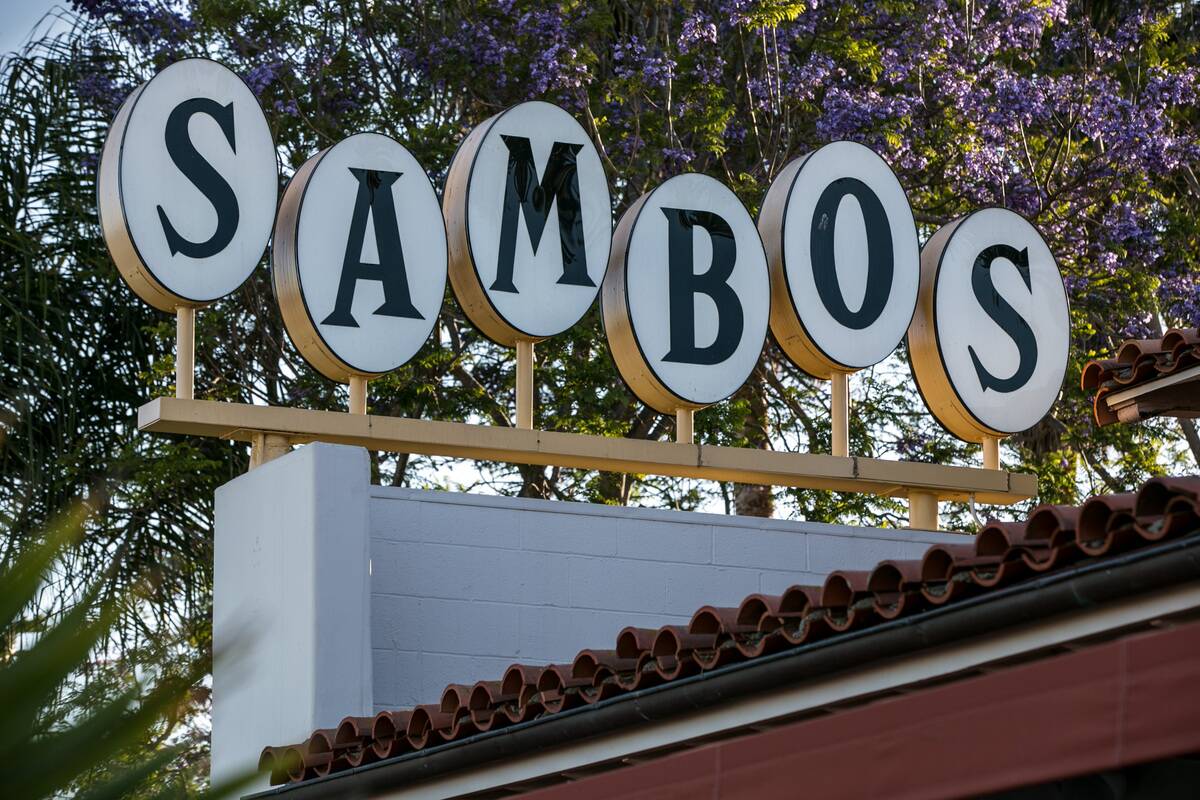
The first Sambo’s opened in 1957 by Sam Battistone and Newell F. Bohnet. From the get-go, the restaurant chain made headlines for all the wrong reasons. The name, which the owners claimed was simply a combination of their names, rather than a derogatory term for African Americans, didn’t sit right with the public. Sambo’s was also filled with questionable decor, including the caricature Li’l Black Sambo. Still, Sambo’s grew, and at its height had around 1,117 locations in 47 states.
On top of the negativity associated with the brand, a handful of bad corporate-level decisions led to the chain’s demise. Sambo’s filed for bankruptcy and began closing stores in the early ’80s.
White Tower
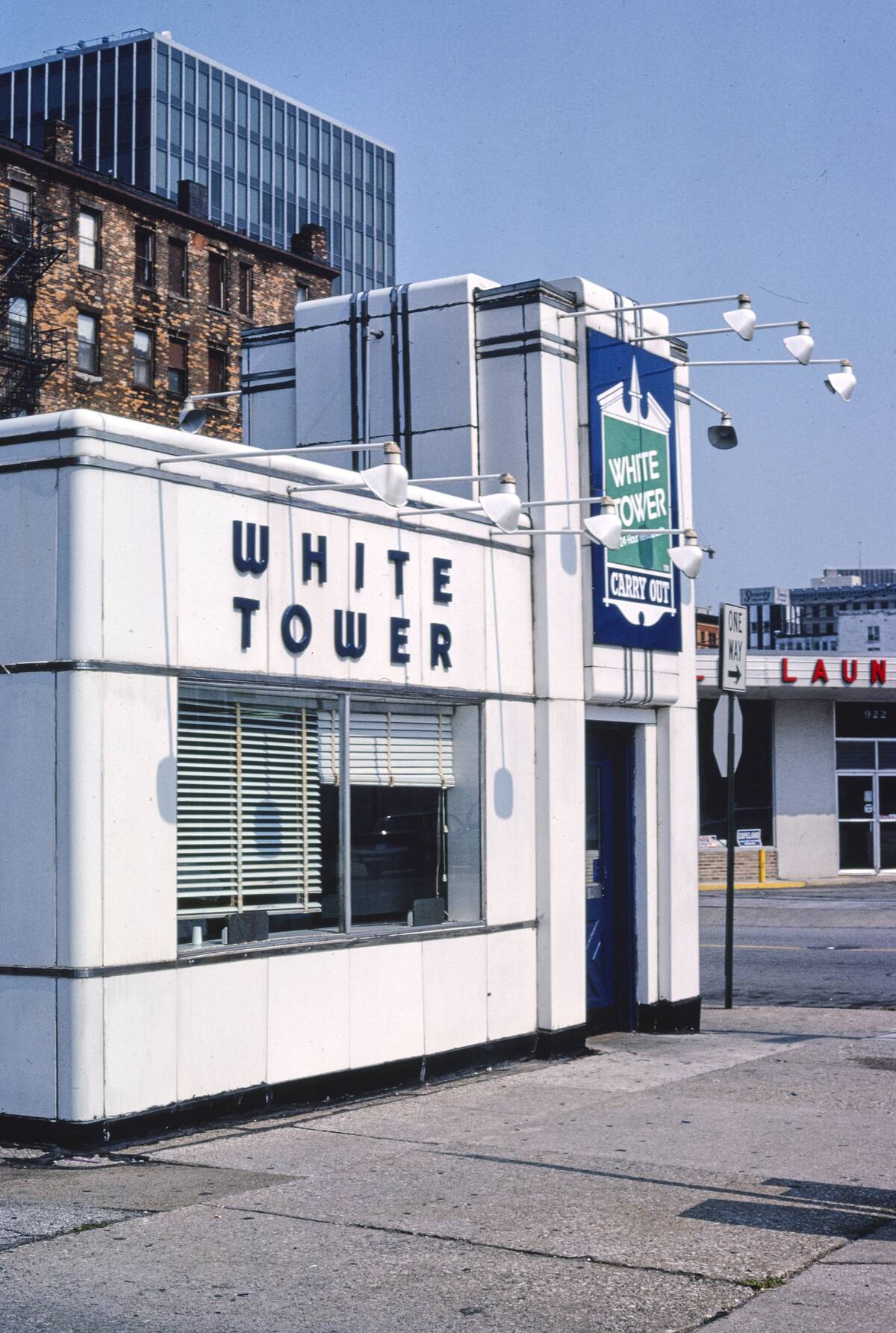
The first White Castle location opened its door in 1921. The burger joint saw immediate success which brought on a slew of imitators. One of those imitators was White Tower.
White Tower was opened by John E. Saxe and his son, Thomas. The duo shamelessly copied White’s Castles menu, style, and advertising. They even went as far to copy the architecture of the burger chain. Despite being a blatant knockoff, White Tower saw success and went on to open 230 locations at its peak. It turns out White Castle doesn’t think imitation is the sincerest form of flattery. They brought legal claims against White Tower, forcing them to make significant changes to their business, which ultimately led to their demise.
Chi-Chi’s
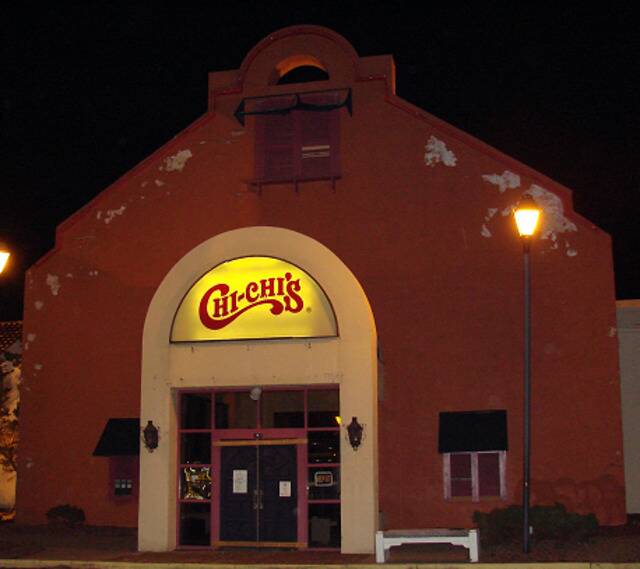
In 1975, Marno McDermott and NFL star Max McGee launched the first Chi-Chi’s in Richfield, Minnesota. The chain introduced rudimentary Mexican fare to many American towns, which caused its popularity to soar. But as Mexican restaurants across the U.S. saw a surge in popularity, Chi-Chi’s began to fail.
The franchise managed to stay afloat into the early 2000s. In 2003, a Hepatitis A breakout in the chain’s food supply resulted in the death of three customers. As of 2004, the majority of Chi-Chi’s were closed in the United States and Canada. The last remaining restaurant stayed open in Utah until 2011.
Lum’s
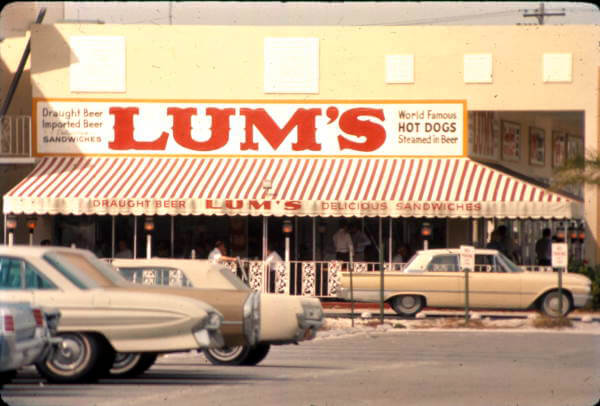
Clifford and Stuart Pearlman opened the first Lum’s in Florida in 1971, purchasing the hot dog stand for a mere $10,000. The brother’s chain offered “beer-steamed” hot dogs, which were an immediate hit. The chain grew slowly at first, with four locations open in 1961. But in the late ’60s, Lum’s aggressively expanded — at one point, more than 400 locations were open!
In 1971, Lum’s sold to John Y. Brown, the then-chairman of Kentucky Fried Chicken. A few years later, 273 of the locations were purchased by Wienerwald Holdings. The holding company overextended itself and filed for bankruptcy not long after, leading to the ultimate demise of Lum’s. The number of location dwindled, and in 2017, the last Lum’s closed its doors.
Valle’s Steak House
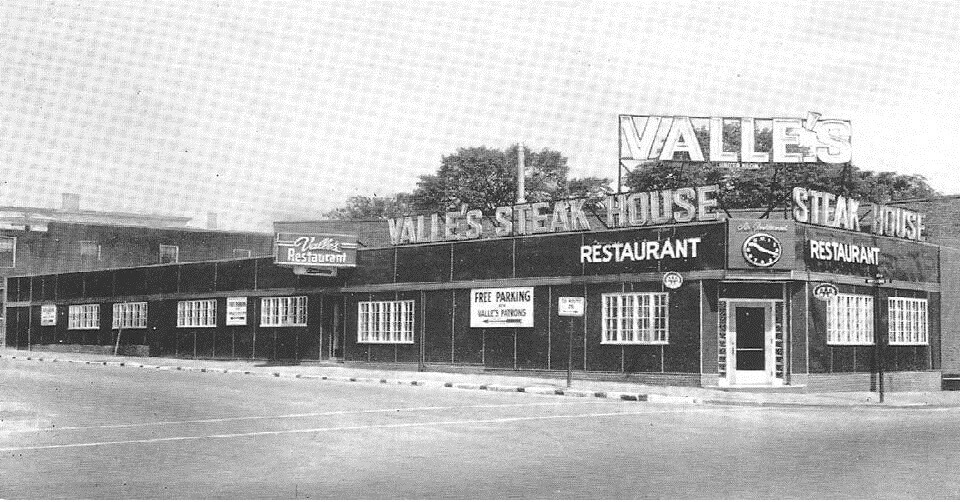
Valle’s Steak House was an East Coast chain of restaurants that operated from 1933 to 2000. Known for its menu of steak and lobster, the small family-run business expanded aggressively during the 1970s.
Unfortunately, Valle’s encountered numerous factors that led to its demise. In 1977, Donald Valle passed away, leaving the Valle family with an estate tax bill they couldn’t pay. This, coupled with declining sales, led Richard and Judith Valle to sell their shares in the business. Before his death, Donald Valle had tried to emphasize food over liquor, even though alcohol is more profitable thanks to higher markups. In the end, it was this obsolete business model that sealed the steakhouse’s fate.
Mr. Steak

Mr. Steak was a popular steakhouse during the ’70s and at its peak had nearly 300 locations in operation throughout the United States. Unfortunately, the chain’s food quality wasn’t up to par with the competition and Mr. Steak’s steak was underwhelming compared to competing chains like Sizzle and Stuart Anderson’s Black Angus.
Mr. Steak filed for bankruptcy in 1987. In a last-ditch effort to save the company, a few of the locations were converted to a new chain called Finley’s. Today, there are five Finley’s still open throughout Michigan, but all of the Mr. Steak locations have been phased out.
Bennigan’s
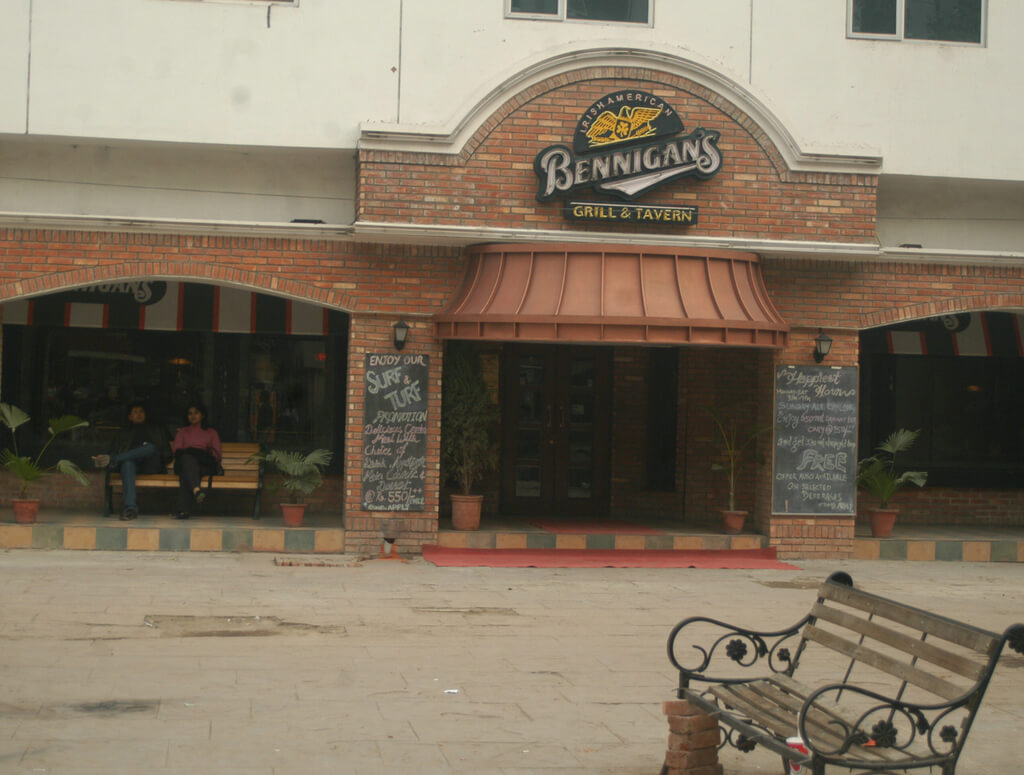
Bennigan’s was a popular Irish pub-themed restaurant. Found in 1976 by Norman E. Brinker, Bennigan’s was best known for being one of the first mid-range casual dining establishments.
Bennigan’s continued to grow throughout the United States and even abroad, opening locations in 14 countries. Unfortunately, the chain’s executive failed to modernize Bennigan’s, and its outdated concept led to a slump in sales. Bennigan’s lagged behind the likes of Chili’s and T.G.I. Friday’s and, in 2006, closed the majority of its locations.
Casa Bonita
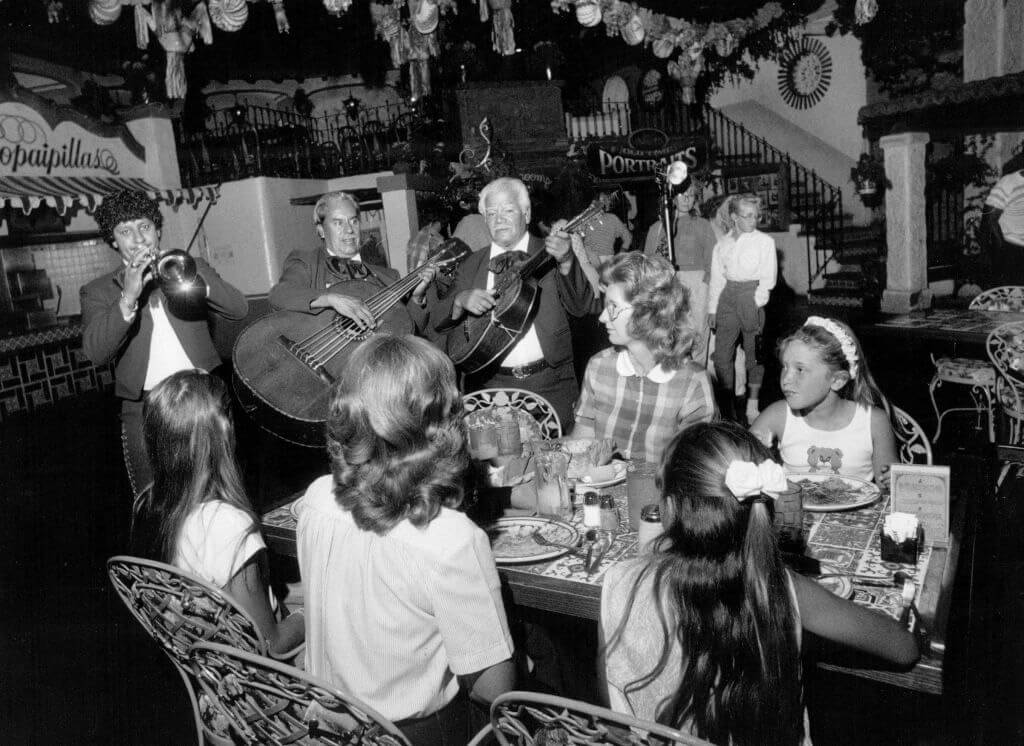
Casa Bonita originated in Oklahoma City as a Mexican-themed “eatertainment” restaurant. That’s right, at Casa Bonita, you could be thoroughly entertained while you eat. However, what kept people coming to Casa Bonita was their all-you-can-eat beef and chicken plates, and who could forget those delicious sopapillas?
Throughout the ’70s to the ’90s, it was actually a nice place to eat. But Casa Bonita wasn’t as successful as it set out to be and as of today, there is only one location standing. You can check this place out in Lakewood, Colorado, where Casa Bonita is officially a historical landmark.
Ponderosa Steakhouse and Bonanza Steakhouse
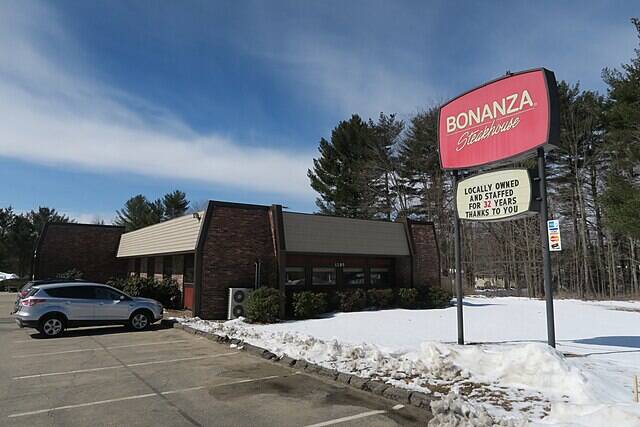
If you were a fan of this restaurant chain, don’t worry — there are still 88 Ponderosa Steakhouse and Bonanza Steakhouses in operation today. But throughout the ’70s and ’80s, the steakhouses thrived with more than 600 locations.
The buffet-steakhouse chain opened in 1965 in Plano, Texas. Diners loved the classic American fare which included steak, seafood, and chicken entrees with a buffet of sides. Throughout the ’80s and ’90s, the chain was sold numerous times, and eventually, its parent company, Metromedia Steakhouses, filed for bankruptcy in 2008. It reemerged the next year as Homestyle Dining LLC.
Henry’s Hamburgers
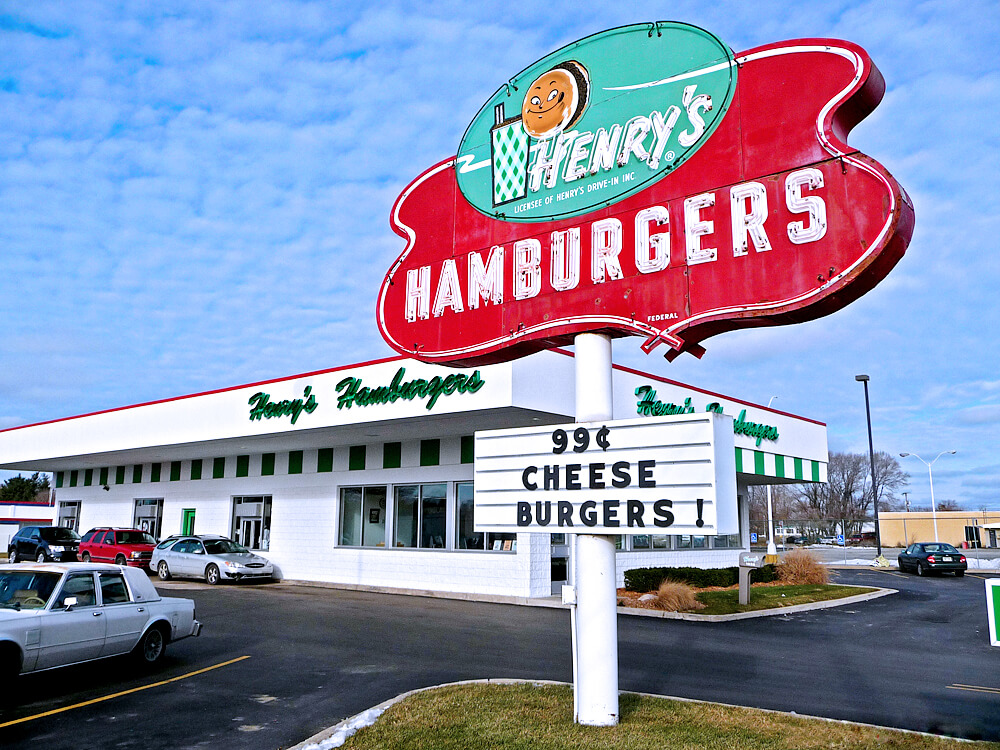
Henry’s Hamburgers opened its doors in 1954 in Chicago. Originally the Besler’s Ice Cream Company, the small shop decided to expand into the fast-food drive-in industry.
Henry’s Hamburgers grew to 35 locations by 1956 and did well in the Chicago area. Fast forward to the early ’60s, and Henry’s Hamburgers experienced serious growth. With 200 locations, customers couldn’t get enough of the chain’s 99-cent cheeseburgers with a side of fries and a milkshake. By the mid-’70s however, Henry’s Hamburgers began closing at an alarming rate. While the reason why is still unclear, it is suspected that changes in ownership and mergers played a role. Today, there is one Henry’s Hamburgers location in Michigan.
Kenny Rogers’ Roasters

In 1990, country singer Kenny Rogers partnered with former KFC CEO John Y. Brown to launch the chicken chain, Kenny Rogers’ Roasters. The restaurant chain served rotisserie-roasted chicken with traditional sides like mac ‘n’ cheese, mashed potatoes, baked beans, and cole slaw.
While the food was popular (an entire Seinfeld episode was dedicated to the eatery), Kenny Rogers’ Roasters was never able to make it alongside the big dogs in fast food. Rogers and Brown sold their business to Nathan’s in 1998, who then sold it to their Asian franchiser. Today, there are no Kenny Rogers’ Roasters in the United States, but the chain continues to flourish in Asia.
Pup ‘N’ Taco
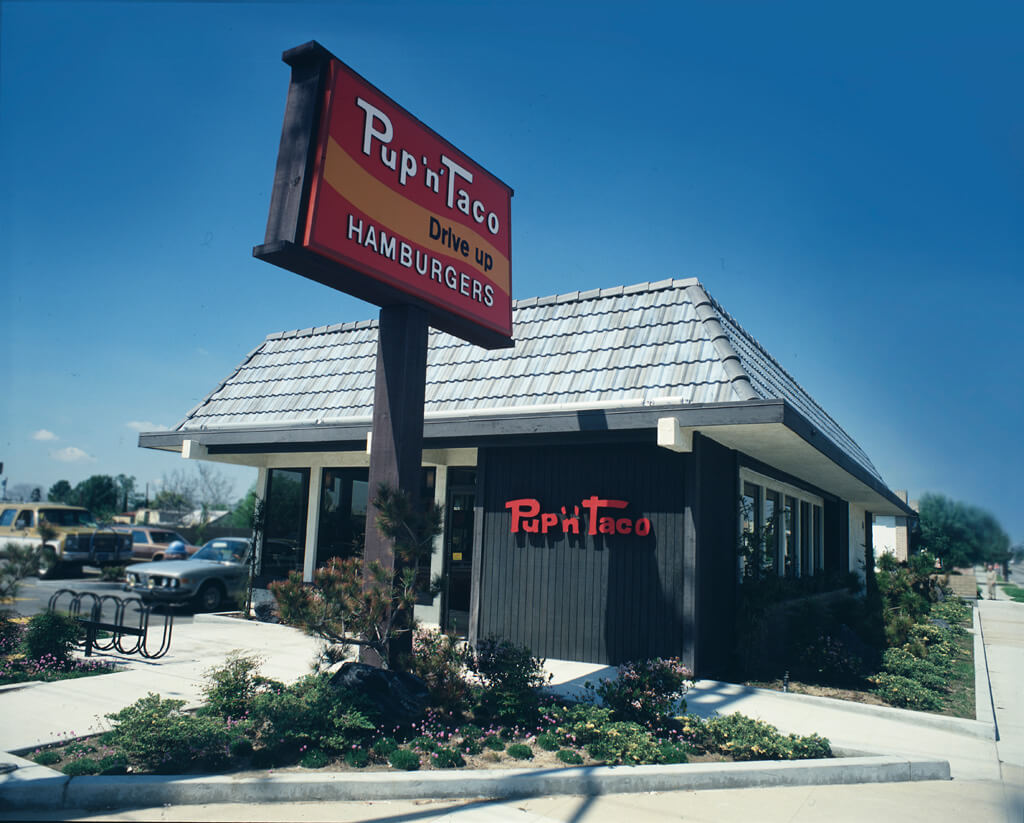
If you remember Pup ‘N’ Taco, then you must have been around Southern California during the 1970’s. The first Pup ‘N’ Taco opened in Pasadena, California in 1965 and specialized in tacos, tostadas, pastrami sandwiches, fries, and hot dogs. Of course, the best way to wash it all down was with a Pup ‘N’ Taco slush!
By 1973, there were 63 Pup ‘N’ Taco locations. Come 1984, however, Taco Bell bought 99 Pup ‘N’ Taco stores thoughout California for their prime locations. The sale effectively ended the existence of the Pup ‘N’ Taco chain.
Rax Roast Beef
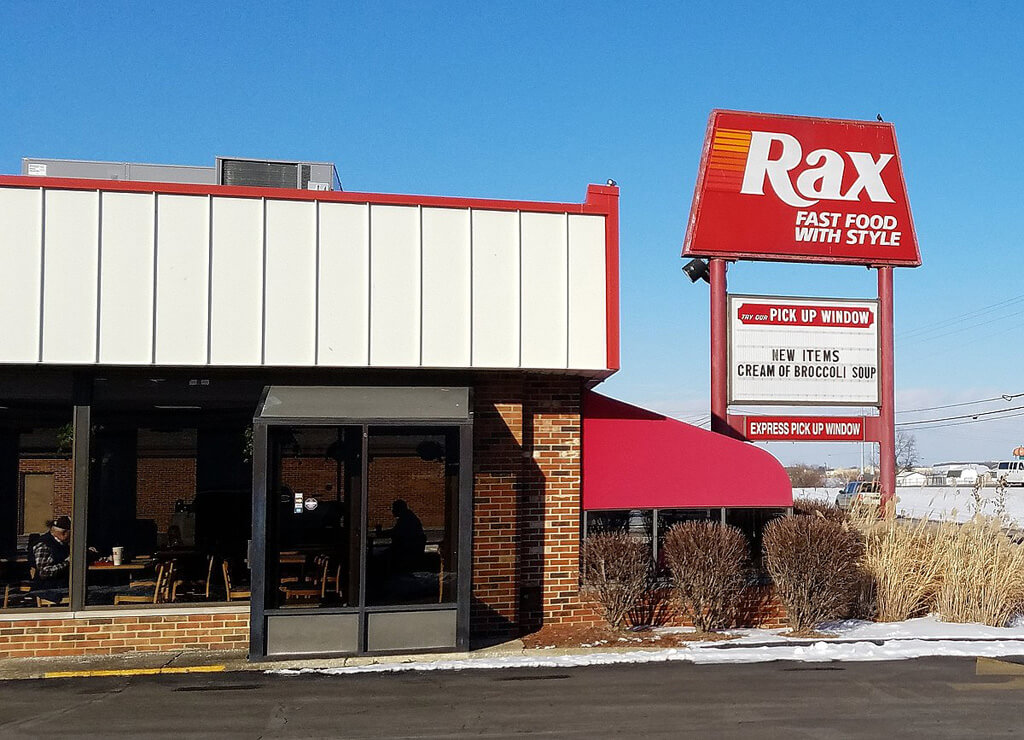
Rax Roast Beef is an Ohio-based fast-food chain that at one point in time could stand up to its largest competitor, Arby’s. They were very popular throughout the ’80s and their addition of a salad bar locked people in for a short time.
But afterward, things got a little too complicated. Many locations started implementing pizza, baked potatoes, “Chinese-style” food, and even a taco bar. By the time they started redesigning their stores to be the “champagne of fast food,” Rax lost many customers. By 1988 they decided to scale back to focus on sandwiches but by then it was too late.
Claudia Sanders, “The Colonel’s Lady”
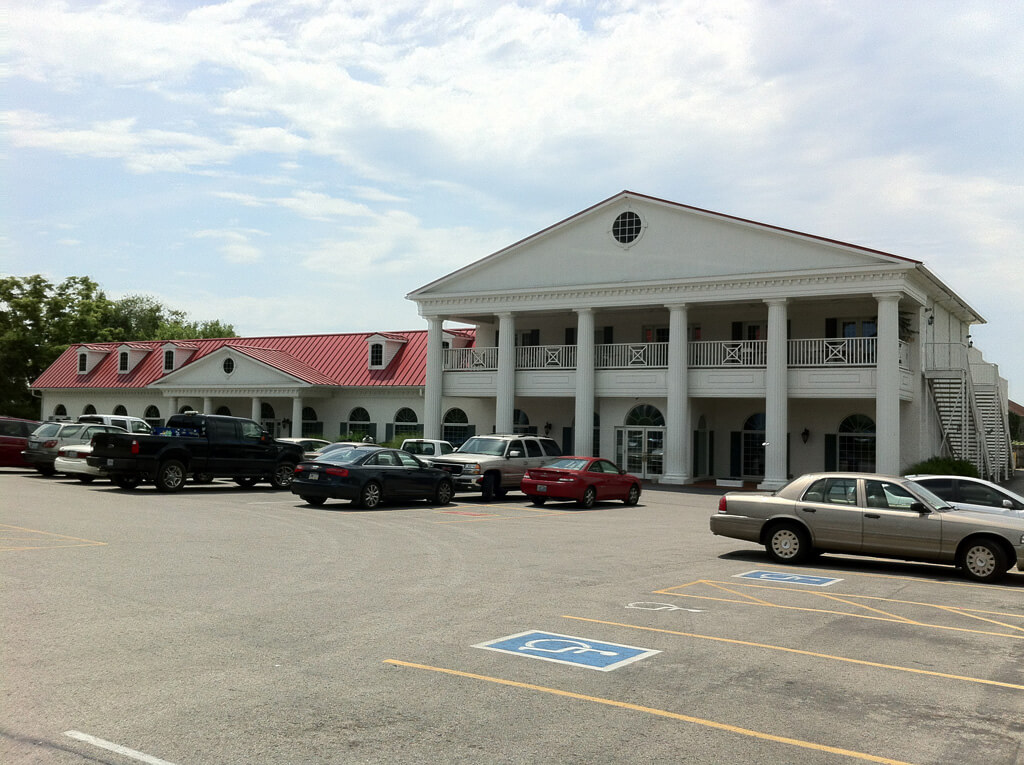
Claudia Sanders, “The Colonels Lady,” was Colonel Sanders’s wife in the 1960’s. By 1964, Colonel Sanders had made his fried chicken recipe famous and with more than 600 restaurants, sold the chain to a group of investors.
In 1968, Sanders and his wife decided to reopen their original location in Shelbyville, Kentucky as “Claudia Sanders, The Colonel’s Lady,” where they served KFC-style chicken for which they were sued. They reached an agreement to serve the chicken but changed the name to Claudia Sanders Dinner House with a full-service dinner menu.
Weenie Beenie
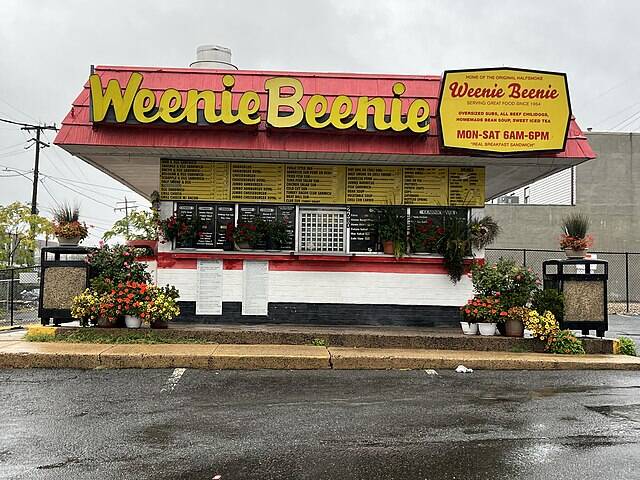
If you’ve seen a Weenie Beenie in your lifetime then you probably frequented the Virginia area a lot during the 1950’s. Weenie Beenie restaurants were famous for their half-smokes, hot dogs, and pulled pork sandwiches.
The chain was founded by Carl and Bill Staton in Arlington, Virginia. Bill Staton was a huge billiards player who used the money he made from billiards to fund his restaurants. At its peak, there were a total of six Weenie Beenie restaurants in the world, but today only one is still standing.
Official All Star Café

Official All Star Café was a restaurant chain with a sports theme, similar to ESPN Zone. The chain was developed by Planet Hollywood, who got athletes such as Wayne Gretzky, Joe Montant, Shaquille O’Neal, Ken Griffey Jr., and Andre Agassi to invest in the chain.
The chain was popular throughout the ’90s, particularly the locations in New York City, Las Vegas, and Cancun. However, by 1999 Planet Hollywood filed its first bankruptcy. The following year it was bought by Disney who failed to make keep it alive. The very last restaurant at Disney’s Wide World of Sports closed in 2007.
VIP’s

VIP’s was a casual dining establishment equivalent to Denny’s. Based in Oregon, VIP’s restaurant chain was rampant throughout the Pacific Northwest, particularly on freeways. They were open 24 hours and found in Oregon, Washington, Nevada, and Northern California.
Popular throughout the ’70s, many VIP’s were bought by other companies. In 1982, for example, 35 VIP’s restaurants were sold to Denny’s Inc. for $12 million. The sale was shocking, but VIP’s owners claimed the “offer was too good to pass up” and promised that VIP’s employees would keep their jobs by being absorbed by Denny’s.
Horn & Hardart
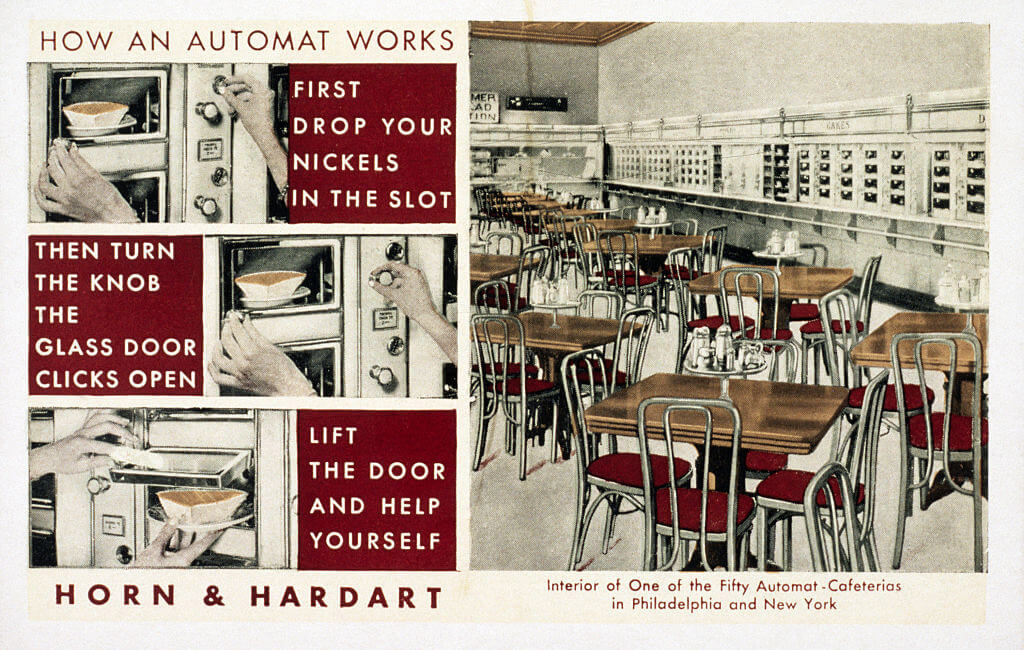
Horn & Hardart was popular in the early 20th century for being one of the few places where food was convenient as serving yourself. This was because Horn & Hardart opened as some of the first food service automats on the East Coast.
What drew people to Horn & Hardart in the first place was their introduction of New Orleans-style coffee, which was just coffee mixed with chicory. The automated service at Horn & Hardart was popular throughout the ’20s and subsequent decades but didn’t last into the ’60s, when fast-food chains became more convenient.
Schrafft’s
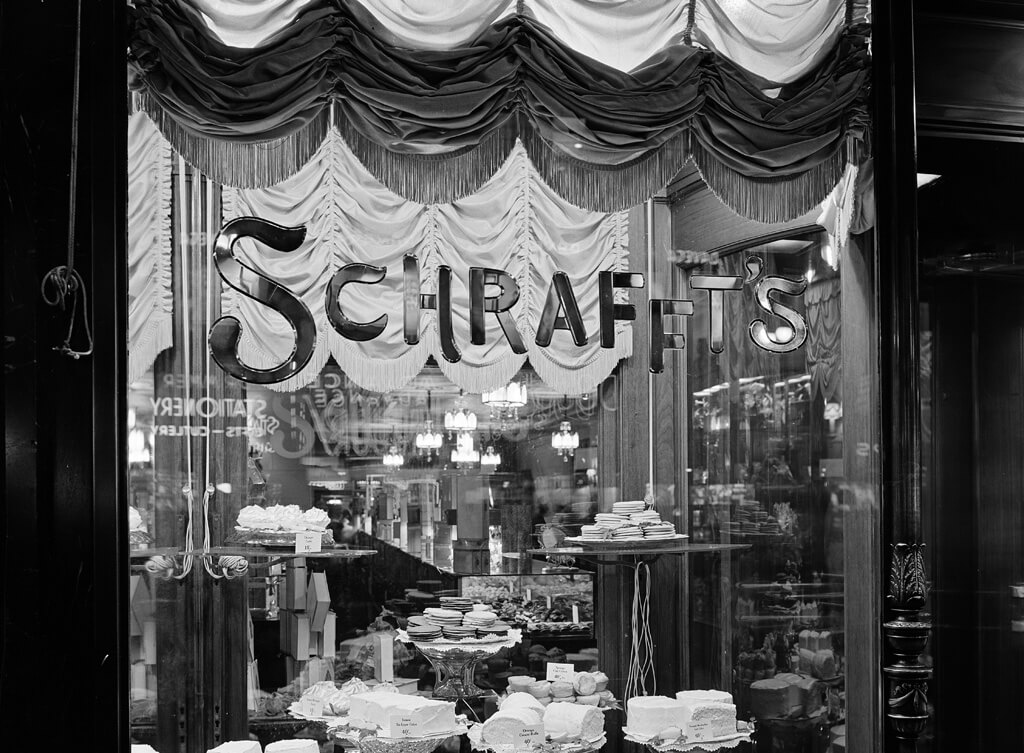
Schrafft’s restaurants opened up in New York City and were operated by the same people who owned the Scrafft’s food and candy business based in Boston. Scrafft’s restaurants opened up in the nicer parts of town and, as a result, attracted a lot of female customers who were out shopping in the area.
They felt safe there as it was one of the first restaurants to allow unattended women to dine. Scrafft’s restaurants somehow managed to survive the Great Depression, but still, they didn’t survive the ’60s. The company was sold and as a result, Schrafft’s restaurants were never the same.
Wimpy
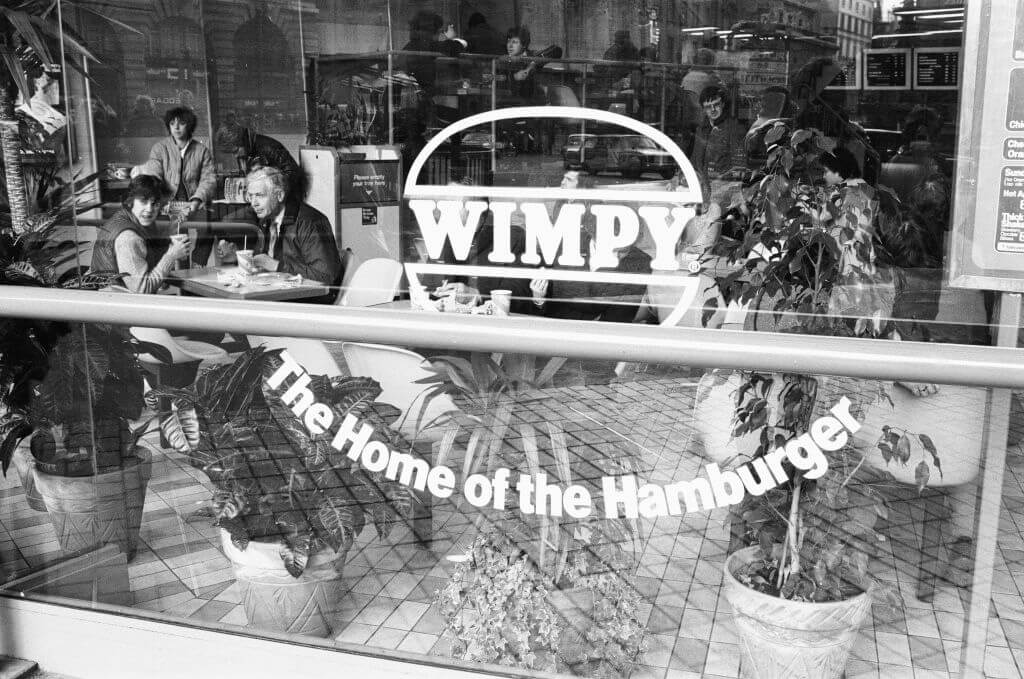
Wimpy was a fast food chain that got so popular, multiple locations opened around the world. The very first one opened up in Bloomington, Indiana in 1934. The brand was established by Edward Gold, who got the restaurant’s name from J. Wellington Wimpy of the Popeye comics.
By the ’40s there were at least 26 locations in the Chicago area. Eventually, the expanded to the United Kingdom and South Africa, where they still exist today. There are no more Wimpy restaurants in the United States because no one purchased the rights to the name after Edward Gold’s death in the ’70s.
Childs
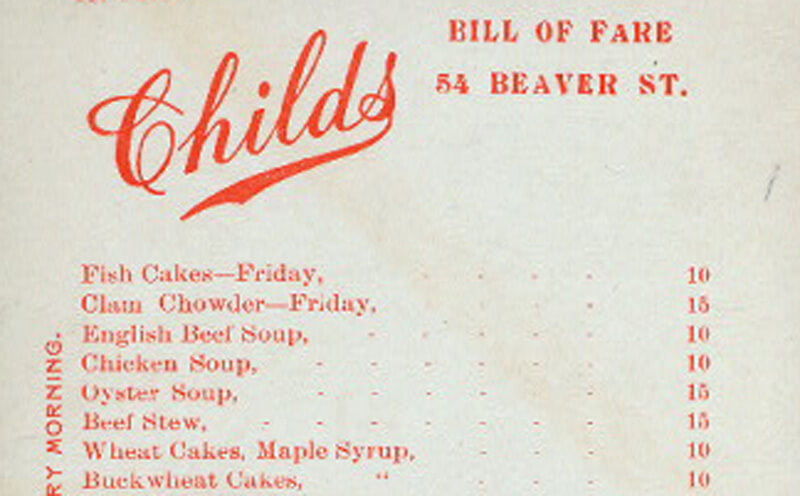
Childs restaurants were some of the most popular eateries during the ’20s and ’30s, with over 125 locations throughout America. It was also the most lucrative restaurant company in the business at the time, serving over 50 million meals a year and making $37 million.
Childs restaurants were pioneers in innovative restaurant design, service, sanitation, and labor relations, which meant it was a decent place to work as well. By the ’40s, however, the company filed for bankruptcy and despite the fact that it had stayed alive through the ’50s, there were pretty no more Childs the following decade.
